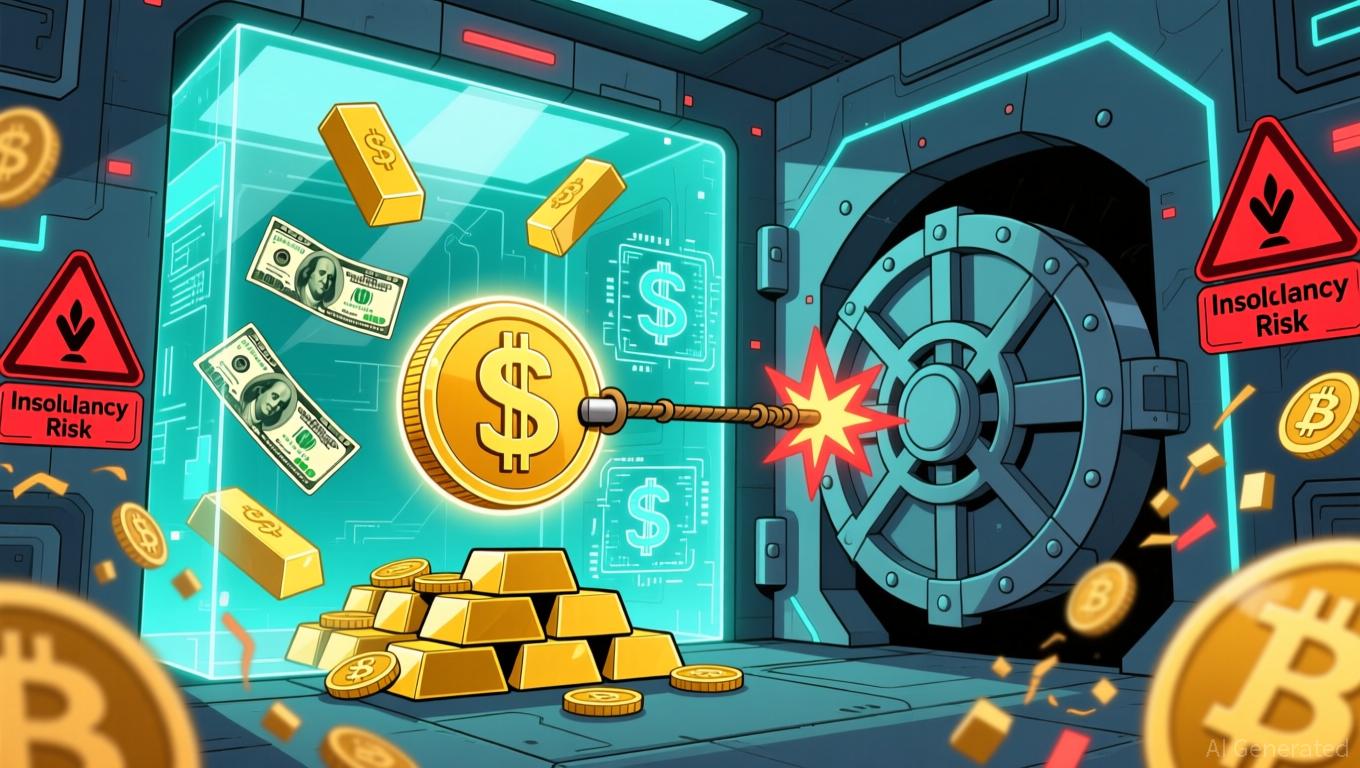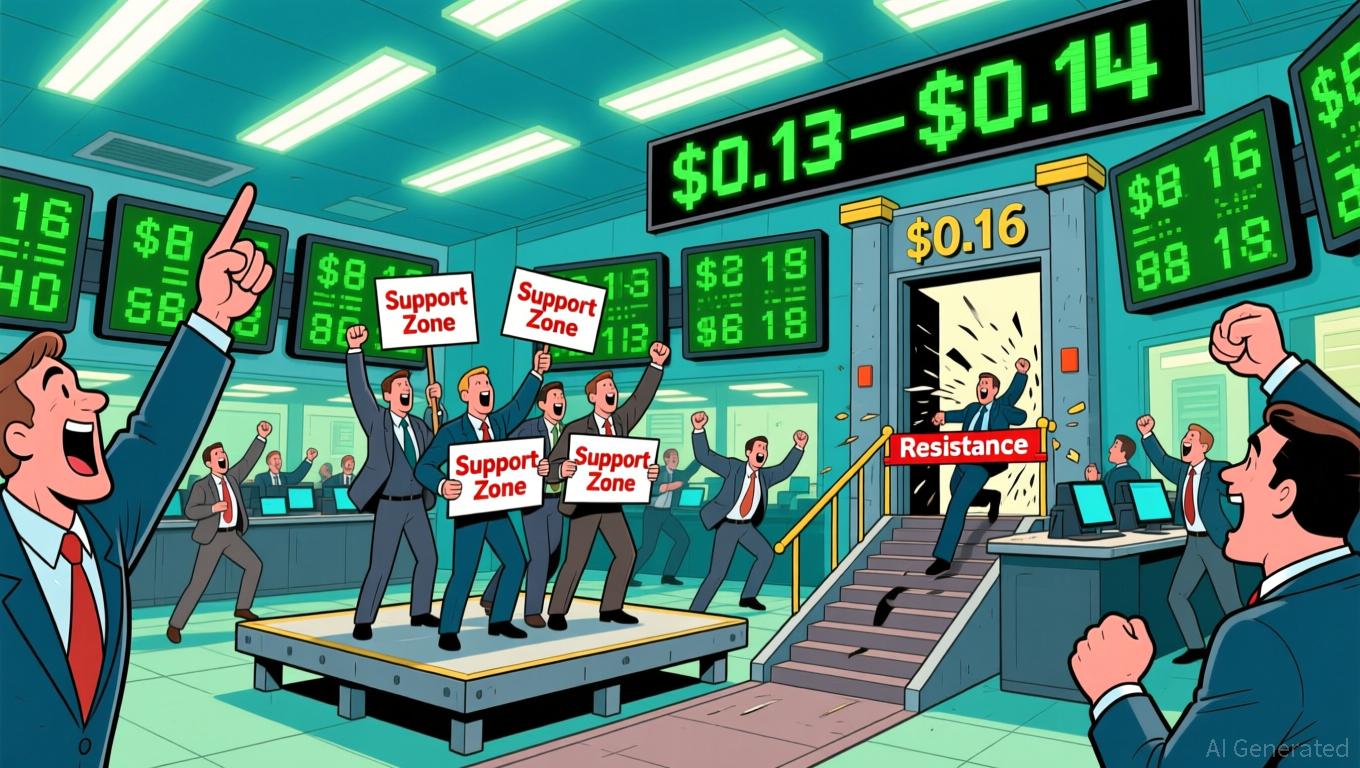Balancer’s $8 Million Recovery Strategy Splits DeFi: Accuracy or Backing the Community
- Balancer DAO proposes $8M recovery plan to reimburse victims of a $116M exploit via proportional BPT-based returns to affected liquidity pools. - Attack exploited a rounding function vulnerability in Stable Pools, bypassing 11 smart contract audits and draining funds through manipulated swaps. - Non-socialized distribution prioritizes precision over community-wide sharing, sparking debates about fairness and governance in DeFi recovery. - Industry experts highlight the incident as a "wake-up call," urgin
Balancer DAO Unveils Plan to Return $8 Million After Major Exploit
Balancer DAO has introduced a proposal to allocate $8 million in assets recovered from a significant $116 million hack that occurred in November 2025. This initiative represents a crucial move in resolving the consequences of one of the most advanced cryptocurrency breaches of the year.
Submitted by two members of the Balancer community, the plan details a targeted reimbursement process. Rather than distributing the recovered funds across the entire community, only the liquidity pools that suffered losses will be compensated. Each affected participant will receive a share based on their holdings of Balancer Pool Tokens (BPT), ensuring that reimbursements are proportional to individual stakes. This method is designed to maintain the value of the recovered assets by restricting payouts to those directly impacted.
Details of the Exploit
The original $116 million theft was the result of a highly sophisticated attack that exploited a rounding function within Balancer’s Stable Pools. Attackers manipulated token price calculations, enabling them to drain funds through a series of batched swaps. Despite undergoing 11 separate smart contract audits by four security firms, the vulnerability remained undetected, raising concerns about the effectiveness of conventional code audits in the decentralized finance (DeFi) sector.
Balancer’s post-incident analysis revealed that the attackers took advantage of a rounding mechanism intended to round token prices down, but instead forced it to round up, allowing them to extract value from the pools.
Recovery and Reimbursement Strategy
The $8 million in recovered assets includes contributions from both white hat hackers and Balancer’s internal rescue teams. Additionally, StakeWise, an Ethereum staking platform, managed to recover nearly $20 million, which will be distributed separately to its own users.
The proposed reimbursement plan focuses on in-kind compensation, meaning victims will receive tokens matching those they lost. This approach is intended to minimize discrepancies in asset values and uphold the principles of transparency and fairness central to DeFi, while also addressing the complexities of managing value differences between various tokens.
Industry Response and Security Implications
Deddy Lavid, CEO of Cyvers, highlighted the broader impact of the incident, describing it as a critical alert for the cryptocurrency industry. He stressed that “security threats are constantly evolving, and even thoroughly audited code can be vulnerable,” underscoring the importance of advanced threat modeling and real-time monitoring solutions.
The Balancer breach has sparked renewed debate about the limitations of current DeFi security measures. Some developers are now advocating for more comprehensive testing protocols and the introduction of insurance mechanisms to better safeguard against future attacks.
Governance and Future Implications
If the proposed distribution plan receives approval, it will be implemented through a governance vote involving Balancer token holders. While some critics argue that limiting reimbursements to affected pools may reduce broader community support, supporters believe this targeted approach ensures accountability and accuracy in restoring lost funds.
The decision is expected to influence how similar incidents are handled in the future, setting a benchmark for balancing fairness with the realities of decentralized governance in the DeFi space.
Disclaimer: The content of this article solely reflects the author's opinion and does not represent the platform in any capacity. This article is not intended to serve as a reference for making investment decisions.
You may also like
Bitcoin News Update: S&P Rating Drop Highlights Tether’s Risky Asset Holdings and Lack of Transparency
- S&P downgrades Tether's USDT to "5 (weak)" due to high-risk reserves and transparency gaps. - Tether's 5.6% BTC exposure exceeds overcollateralization margins, risking undercollateralization if prices drop. - CEO dismisses critique as traditional finance bias, claiming no "toxic" assets in reserves. - Regulators intensify scrutiny as stablecoin centralization risks emerge amid $184B USDT circulation. - S&P urges Tether to reduce risky assets and enhance reserve disclosure to rebuild trust.

Dogecoin Latest Updates: Is a Repeat Performance on the Horizon? Holding $0.15 May Signal a 611% Rally for Dogecoin
- Dogecoin (DOGE) stabilized near $0.15 support, triggering historical 611% rally potential to $1 by 2026. - Grayscale's GDOG ETF and pending Bitwise BWOW ETF mark institutional adoption, though initial inflows remain muted. - Technical indicators show mixed momentum with RSI near oversold levels and key resistance at $0.16. - Market remains divided as ETF-driven liquidity and on-chain infrastructure contrast with macroeconomic and regulatory risks.

Turkmenistan’s Approach to Cryptocurrency: Centralized Oversight Amidst a Decentralized Age
- Turkmenistan legalizes crypto trading under strict 2026 regulations, granting state control over exchanges, mining , and custodial services. - Law mandates KYC/AML compliance, bans traditional banks from crypto services, and classifies digital assets into "backed" and "unbacked" categories. - Central bank gains authority to operate state-monitored distributed ledgers, contrasting with decentralized approaches in South Korea and Bhutan. - Framework aims to balance innovation with oversight, testing Turkme
Bitcoin News Update: Has $162 Billion Left Crypto Due to Institutional Buying or a Broader Market Pullback?
- BlackRock deposited 4,198 BTC and 43,237 ETH into Coinbase amid crypto sell-offs, despite $355.5M Bitcoin ETF outflows. - A 1.8M BTC ($162B) overnight exchange withdrawal sparks speculation about institutional accumulation or portfolio rebalancing. - $40B in BTC/ETH exchange inflows and record $51.1B Binance stablecoin reserves highlight institutional demand for regulated crypto products. - On-chain data shows 45% of large deposits (≥100 BTC) and 1.8M BTC withdrawals, indicating mixed market sentiment ah
